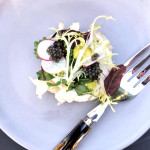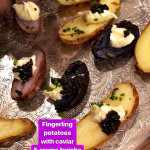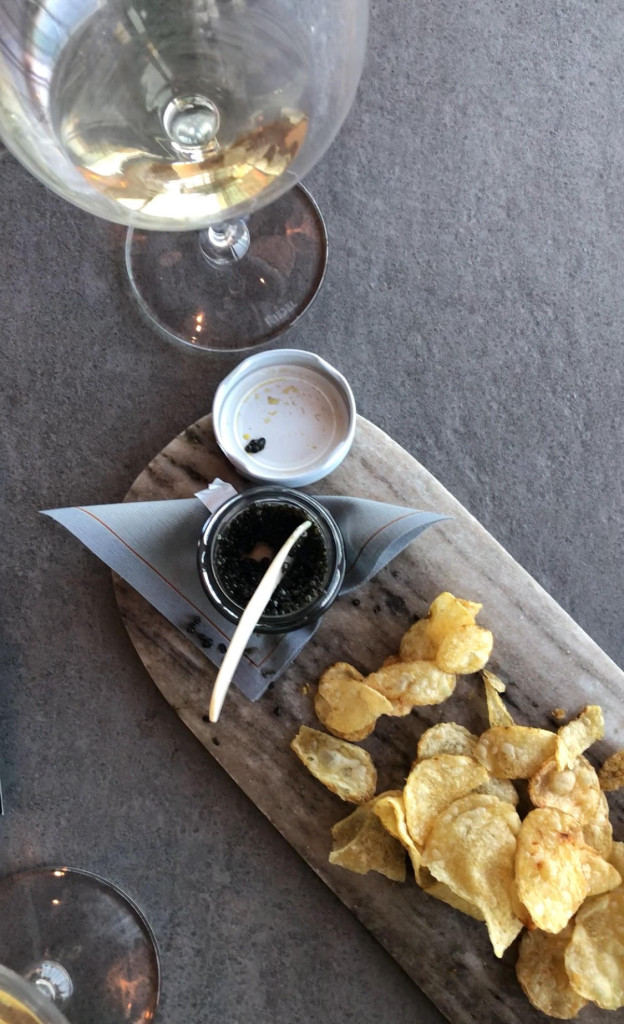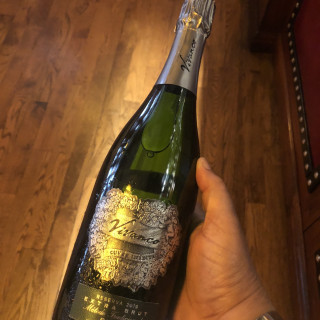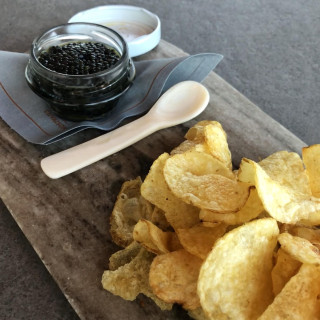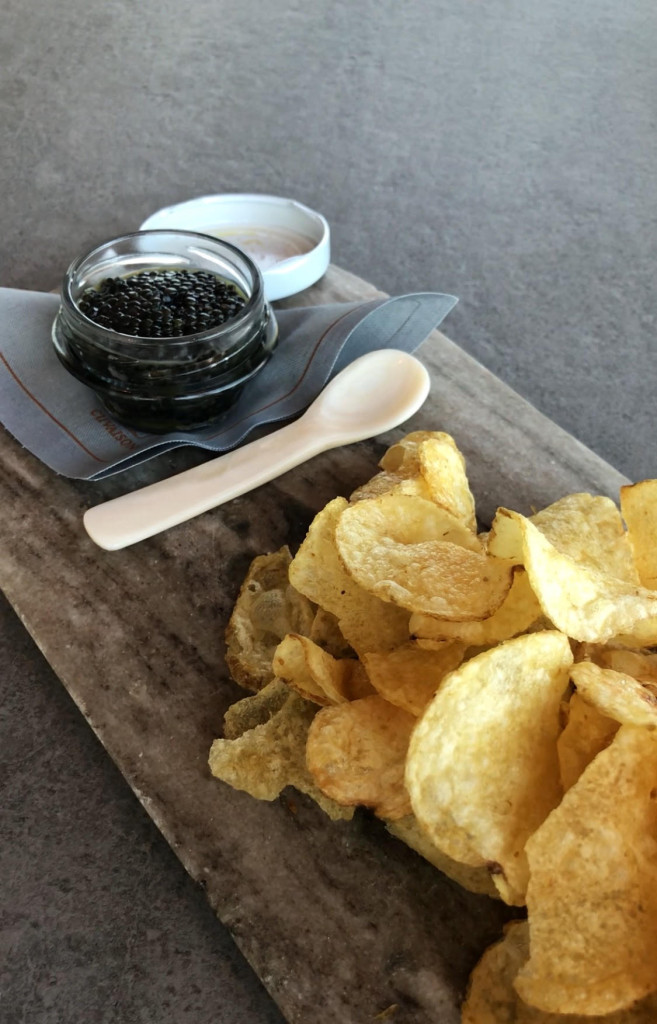 Caviar, once considered a delicacy reserved only for the rich and famous, is now much more ubiquitously celebrated, thanks largely in part to—you probably guessed it—the internet. Those buttery beads of briny deliciousness are currently having a major food trend moment, and it’s one that lovers of culinary decadence definitely shouldn’t miss out on.
Caviar, once considered a delicacy reserved only for the rich and famous, is now much more ubiquitously celebrated, thanks largely in part to—you probably guessed it—the internet. Those buttery beads of briny deliciousness are currently having a major food trend moment, and it’s one that lovers of culinary decadence definitely shouldn’t miss out on.
Excited about joining in on this fab foodie trend but you’re a little unfamiliar with the ins and outs of caviar? Check out The Bubbleista’s short and sweet—or should I say “salty”— Caviar primer below.
“How to Caviar” Caviar 101 guide:
You’re Just My Type: There are several different types of classic and hybrid caviars, each one having its own unique flavor and texture. That said, it’s important to note that—similar to the way all champagnes are sparkling wine but not all sparkling wines can be called champagne—all caviar is fish roe, but not all fish roe can be called caviar.
The original, classic types of caviars are Almas, Beluga, Osetra, and Sevruga, all of which can only come from sturgeon found in the Caspian Sea (which is surrounded by Iran, Kazakhstan, Turkmenistan, Azerbaijan, and the Russian Federation).
- Almas, with its pearl white-colored eggs and a distinct buttery, briny, nutty taste, is the rarest and most expensive of all caviars. It’s so rare, in fact, that many caviar lovers have never heard of it, let alone eaten it.
- Beluga is one of the most prized caviars and comes from the Beluga sturgeon, which is It has large, light-colored eggs and a buttery flavor.
- Osetra caviar has medium-sized eggs and a nutty flavor.
- Sevruga caviar has small, dark-colored eggs and a slightly salty flavor.
Designed to help protect wild sturgeon populations, hybrid caviar is a relatively new type created by crossbreeding different species of sturgeon via sustainable farming practices. Hybrid caviar’s appeal lies in its accessibility: it’s a great quality caviar at a more “affordable luxury” price point.
Some of the most common types of hybrid caviar include Kaluga, Siberian Hybrid, White Sturgeon Hybrid, and there are also some USA made caviar types such as Paddlefish and Bowfin.
Making the Grade: Similar to the ways in which wine is assessed, caviar quality is graded based on its flavor profile, its feel in the mouth, and color. Globally renowned chef Daniel Boulud has tweaked that and made a grading easier to remember with his 3T system:
TASTE— “[It] shouldn’t be overly salty, if so its poor quality or old— did you know that caviar’s salinity concentrates as it gets old?”
TEXTURE: [The caviar beads] should burst in your mouth; should be able to separate the caviar beads with your tongue.”
TONE: “…bright, glistening in color; no cloudiness.”
The highest grade of caviar is known as “Grade 1” and it consists of the largest, most vibrantly colored, firmest. most delicate eggs with distinguishable flavor, while Grade 2 is slightly lower in quality but still just as delicious.
How to Eat the Beads: Eating caviar was once a more formal luxury experience rooted in European traditions, such as only being served with accouterments like chopped egg, creme fraiche, and blinis (a small Russian pancake). Current day culinary vibes are all about breaking the rules though, so it’s now used to top French fries, garnish pizza, dollop on deviled eggs, and even used as a condiment for fried chicken.
If you’re entertaining, here are some fun ideas on how to serve it:
- serve them on pre-baked, sliced lengthwise purple and gold fingerling potatoes
- top rectangular sliced planks of crustless grilled cheese sandwiches with caviar
- top plain salted Kettle-style chips with diced sashimi tuna, chives, and caviar
Better still, here’s a fun fact for the health conscious crowd: caviar is actually a super food high in B12, amino acids, antioxidants, and Omega-3s. That means you have every reason to treat yo’ self.
If you’re eating caviar on its own, however, there are still a couple of rules to abide by: (1) caviar should always be served chilled; (2) you should avoid using metal utensils to eat it with since metal destroys the flavor and quality.
Want to test the caviar waters but you’re new to it, on a budget, or you’re vegan? The culinary world has still got you covered with options for inexpensive caviar roe (like salmon roe). caviar flavored chips, and vegan (no soy, gluten free) “seaweed caviar” that mimics real caviar’s briny flavors.
Corks for Your Caviar
While vodka is the traditional spirit to serve with caviar, wines can make a perfect pairing, too. Champagne is a quintessential option, of course, but there are several other varietals that work beautifully, too.
For white wines, steer towards crisp, slightly fruity styles with some citrus notes that aren’t ultra dry since super dry wines don’t work well with the salinity of the caviar. Here are some sipping options:
- Burgundian Chardonnays such as Chablis, Meursault
- Brut non-vintage or Blanc de Blancs (100% Chardonnay) champagne (or sparkling wine—click here for some champagne-adjacent picks)
- Grüner Veltliner
- Chenin Blanc
As for rosé and red wines, think light to medium bodied with more delicate flavors that won’t overpower those of the caviar:
- Pinot noir
- Blanc de noir champagne (we love Meunier-driven BdN)
- Gamay
- Rosé champagne

